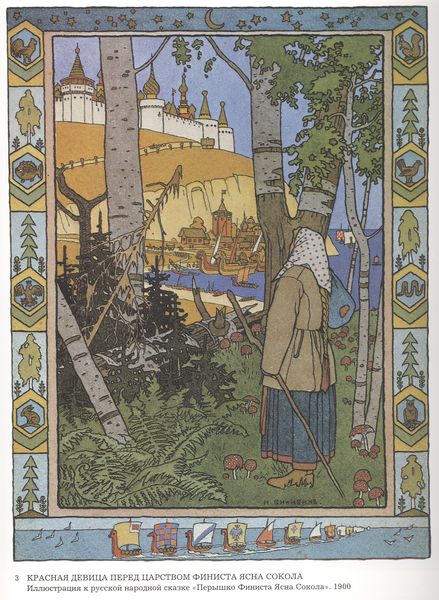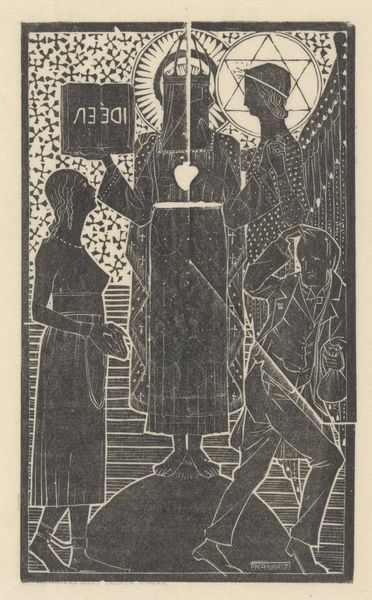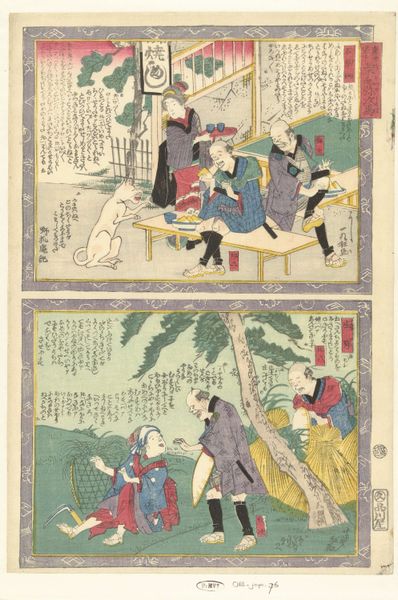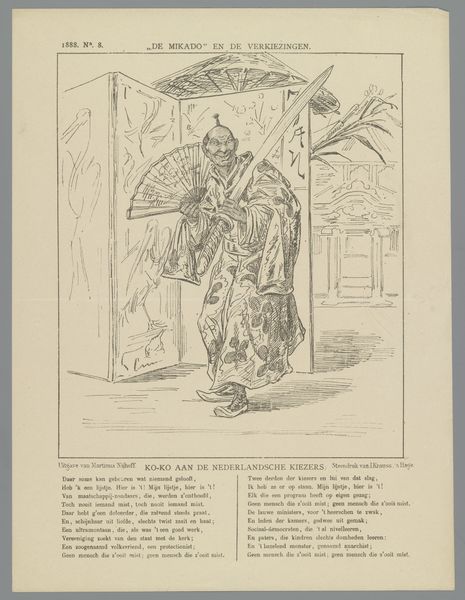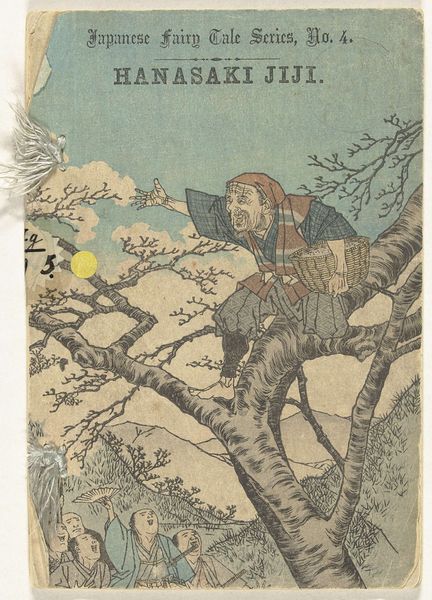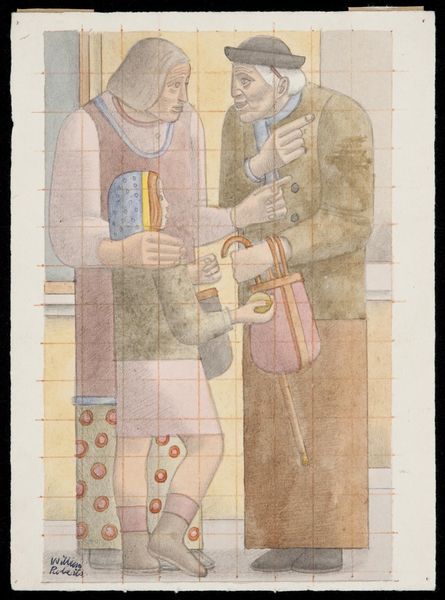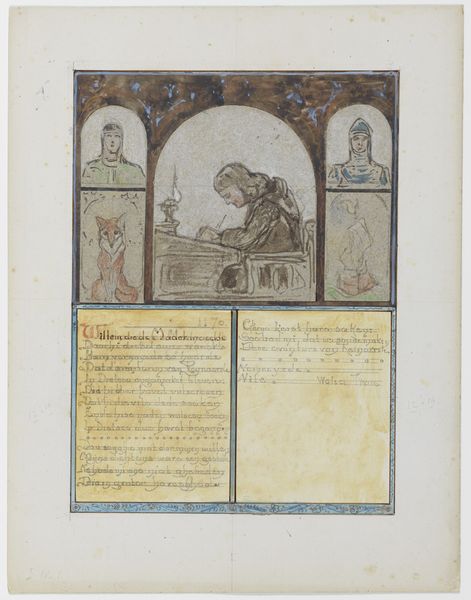
tempera, painting
#
narrative-art
#
tempera
#
painting
#
landscape
#
figuration
#
folk-art
#
russian-avant-garde
Copyright: Public domain
Curator: Here we have a page from Ivan Bilibin's illustrations for the fairy tale "Vasilisa the Beautiful," probably done with tempera paint sometime around the turn of the 20th century, though a specific date isn't listed. Editor: Right, it has that really distinct storybook look. I'm immediately drawn to the vibrant borders and how they frame the main scene. What strikes you most about this image? Curator: Well, let's consider the materials. Tempera, often made with egg yolk, offered Bilibin a matte finish and allowed for precise detail. How do you think that impacts our reading of the illustration? Does it perhaps speak to a certain…careful crafting, perhaps reminiscent of the hand-made nature of folk art? Editor: I think the flatness almost enhances that storybook quality, making it feel less like a window into another world and more like a crafted object, almost textile-like. Curator: Precisely! And look at the framing. He uses this dense foliage that has an ornamental character. What might those design choices reflect about Bilibin's engagement with Russian cultural identity and craft traditions during the Russian Avant-Garde? He was interested in *reviving* them, right? Not just depicting stories. Editor: It’s as though he’s elevating these folk motifs to a level of fine art by combining them with contemporary illustration techniques, imbuing his image-making process with social meaning. Is he then questioning that traditional art hierarchy through his making of this page? Curator: Exactly. And consider the broader socio-political climate. The Avant-Garde, although innovative, often grappled with questions of national identity and the role of art in society, and I'd argue it is through choices like using tempera, appropriating motifs that have clear social origin, framing these elements in a page from an illustrated book that Bilibin engages with his peers on what art should mean, and how it is used, now. What do you make of his place in the canon? Editor: This definitely reshapes my understanding of avant-garde as purely radical, revealing the subtle ways in which it negotiated tradition and national identity. Curator: Indeed, it’s a reminder that artistic innovation isn’t just about breaking with the past but reinterpreting it through material choices and techniques laden with historical context.
Comments
No comments
Be the first to comment and join the conversation on the ultimate creative platform.





